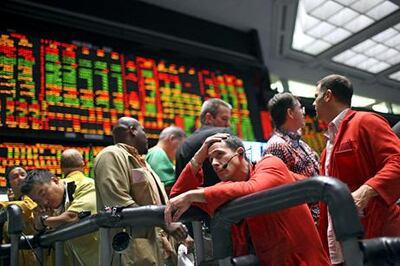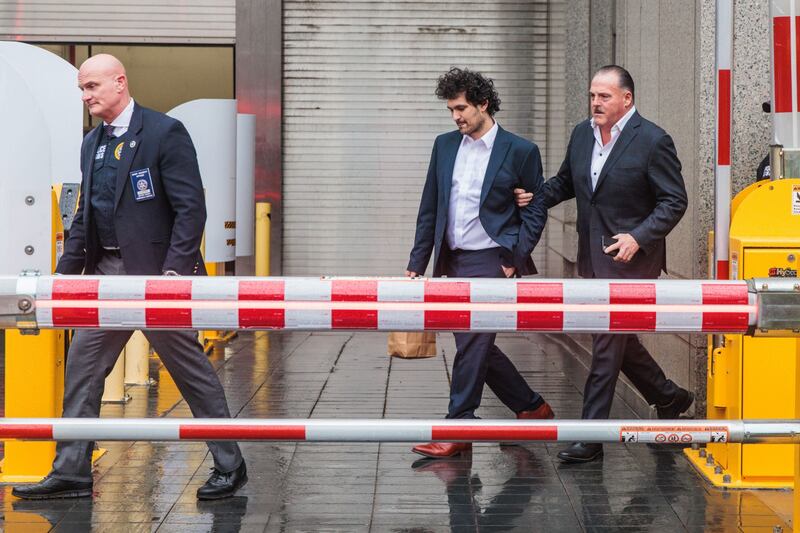Investors are currently muddling through a crypto winter, that has depressed both the value of digital assets and the wider technology sector.
Many believe it was the November collapse of exchange FTX that marked the turning of the weather for the market.
FTX’s Sam Bankman-Fried denies criminal charges and claims he did not defraud investors. Billions of dollars in FTX customer deposits are missing after the company allegedly used them to support Bankman-Fried’s Alameda Research hedge fund. The fallout from the scandal has rocked the financial world beyond crypto, with his political contributions and sports sponsorships also in the spotlight.
However, how would investors even know what to look for when it comes to crypto? So much of the sector seems opaque and confusing. Many names come and go and the jargon can be suffocating.
In a conversation with me at Davos this year, Michael Gronager, chief executive and co-founder of Chainalysis, a company that tracks the billions of transactions on the blockchains where digital assets are traded, unpicked how the crypto winter actually came about. “What happened in the beginning of 2022, was that the interest rates started to go up, tech stocks started to fall and the same happened for the cryptocurrencies,” he explained.
Then in May, when the Terra stable coin network collapsed it triggered the failure of 3 Arrows Capital and crypto lender Celsius.
According to Mr Gronager that meant $50 billion in realised losses for the industry.
“Then, fast forward to FTX. That was $10 billion realised losses. So if you look at it as just from the data, what happened in this part of finance that was called crypto, then you would say the big event was in the spring and not in the fall, and the fall was like a shock wave breaking out,” he said.
A good analogy of what happened in crypto is to think of FTX as the equivalent of the Lehman Bros failure in September 2008 while the collapse of the other crypto companies preceding FTX were like investment bank Bear Stearns’ failing in March 2008.

During the financial crisis 15 years ago, Bear Stearns’ collapse didn’t necessarily fully alert us all to the bigger risks we were facing but they were there. It is the same case with crypto.
Few understood the significance of what had happened in the first half of the year and it took FTX and Sam Bankman-Fried, who had a very high profile, to be involved before a broader swathe of investors began to take notice of the downturn in crypto markets.
“Everyone knew Sam and he built a brand that a lot of people had attached to their brand. So that meant that it hurt more,” said Mr Gronager.
However, investors should have been applying more scrutiny well before FTX’s collapse as the earlier failures began the spiral for Mr Bankman-Fried’s company, according to Mr Gronager.
“Some of the investments that FTX had done in the industry were in companies that were even more leveraged. And suddenly they lost money. When you lose money, then you have a tendency that 'I want to win them back',” Mr Gronager said.
A CoinDesk article in early November was the catalyst for the spotlight finally moving to FTX. The article highlighted the reliance on FTX’s own FTT digital token.
“The industry now starts to look at [FTX] and says, 'Hey, the emperor doesn't have any clothes on'… And suddenly, you know, everyone looks at it, start to talk about it. There's a little bit of fight maybe on Twitter between [rival Binance CEO] CZ and Sam and CZ can also see like, according to his fiduciary responsibility for the company, he cannot hold the [FTT tokens] that everyone on the internet says is worthless. So he's like, 'I want to sell' and everyone wants to sell [and] now it’s worthless.”
The irony of all the FTX collapse is that the promise of blockchain technology is a mix of radical transparency allied to security. Yet being able to see something isn’t the same thing as being able to understand the information in front of you. Most investors do not have the capacity to follow the numbers and letters that mark the typical blockchain transaction.
They could have seen the crypto crisis coming if they knew what to look for.
Yet an even bigger truth is 10 years ago the sector didn’t exist. We are all learning about crypto as we go. These are expensive lessons.
Perhaps investors would be better off rethinking the idea of backing assets they have only a basic grasp of, rather than be on the hunt for the market's signal for when they might invest again.






